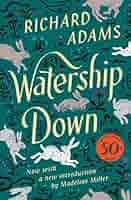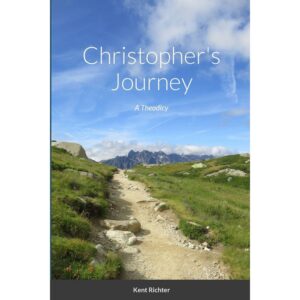The following is adapted from a December 2014 post in AndyUnedited.
The Christmas story always bothered me.
It never made sense. No, I’m not talking about the virgin birth. Not the angels singing to shepherds. Not the star in the sky. Not the wise men.
 No, it was the part about there being no room in the inn. It never made sense. Middle Eastern hospitality is legendary. Strangers, travelers, those in need—you can count on the deeply ingrained culture of showing generosity and graciousness to those who need a meal or a warm bed.
No, it was the part about there being no room in the inn. It never made sense. Middle Eastern hospitality is legendary. Strangers, travelers, those in need—you can count on the deeply ingrained culture of showing generosity and graciousness to those who need a meal or a warm bed.
They would never, ever turn away a pregnant woman—especially a woman who was a relative visiting her ancestral home in Bethlehem. Many close and distant relatives would have been living or visiting nearby to care for her. Turn her away? Send her to a barn? Never. It wouldn’t happen.
Then what did happen? In Luke 2:7, the Greek word traditionally translated as “inn” is better rendered as “guest room,” which is how the NIV puts it. Middle Eastern peasant homes were one large room though sometimes a guest room or “mother-in-law room” was attached. But since the guest room was already occupied, the owners of the house did the only sensible thing—they vacated the main house and gave it over to Mary and Joseph’s use.
The couple would not be alone either. When it came time for the baby to be born, Joseph would wait outside while women in the community would come and assist Mary. Luke didn’t mention the community because his readers would have known that without having to be told.
Then what in the world was a manger (a feed box for animals that Luke mentions) doing inside the house?
 The single, main room of such a house typically had two parts: a smaller ground floor level and a larger level raised a couple feet for cooking, eating, and sleeping. Peasants would bring their animals into the lower level of the house at night for two reasons—to keep the animals safe from thieves and to provide warmth for the family sleeping on the upper level when it was cold.
The single, main room of such a house typically had two parts: a smaller ground floor level and a larger level raised a couple feet for cooking, eating, and sleeping. Peasants would bring their animals into the lower level of the house at night for two reasons—to keep the animals safe from thieves and to provide warmth for the family sleeping on the upper level when it was cold.
Cut into the floor of the upper level where it meets the lower level was (wait for it) a manger. A place for hay to feed the animals.*
Some years ago I was describing this to a friend, and her eyes got huge. “That’s the kind of house I grew up in!” Her family had been missionaries among peasants in Syria. You can still find such homes there today.
Yes, Jesus was not born in a palace, but neither was he born alone in a barn. He was born in a common home of the people, a home that was opened up to him through a delightful demonstration of hospitality. When we welcome into our lives both family and strangers, the needy and the self-assured, we are living the Christmas story.
For the Christmas story is not one of “no room in the inn.” Rather it is one of wondrous welcome and generosity.
—
Image credit: Ambroz from Pixabay.
*See Kenneth E. Bailey, “The Story of Jesus Birth: Luke 2:1-20” in Jesus Through Middle Eastern Eyes (Downers Grove, IL: IVP Academic, 2008), pp. 25-37.

 You can imagine my disappointment when I was told that Christmas trees were an adaptation of a pagan custom. Likewise, you can imagine my delight when I read recently that the “pagan custom” story was in fact a myth. As
You can imagine my disappointment when I was told that Christmas trees were an adaptation of a pagan custom. Likewise, you can imagine my delight when I read recently that the “pagan custom” story was in fact a myth. As 
 What we seldom notice, however, is that there is another Christmas story in Matthew, another version of how Jesus was born to Mary and Joseph. This overlooked account is squeezed between a list of Jesus’ ancestors and the familiar story. Here it is:
What we seldom notice, however, is that there is another Christmas story in Matthew, another version of how Jesus was born to Mary and Joseph. This overlooked account is squeezed between a list of Jesus’ ancestors and the familiar story. Here it is: Matthew’s grand, sweeping overview before the intimate portrait of Mary and Joseph is like a movie that begins with the whole universe in view. Then the camera moves faster than the speed of light through billions of galaxies to pause momentarily on the Milky Way before finding our solar system, racing past Saturn and Jupiter to Earth, then the Middle East, and zeroing in on a room in a Palestinian hovel.
Matthew’s grand, sweeping overview before the intimate portrait of Mary and Joseph is like a movie that begins with the whole universe in view. Then the camera moves faster than the speed of light through billions of galaxies to pause momentarily on the Milky Way before finding our solar system, racing past Saturn and Jupiter to Earth, then the Middle East, and zeroing in on a room in a Palestinian hovel. His overall structure has merit. He begins with what he calls the cognitive revolution of perhaps 40,000 years ago. Sapiens expanded their inventions, art, and language far beyond any other animal. This allowed for cooperation that made up for deficiencies in size, strength, and speed.
His overall structure has merit. He begins with what he calls the cognitive revolution of perhaps 40,000 years ago. Sapiens expanded their inventions, art, and language far beyond any other animal. This allowed for cooperation that made up for deficiencies in size, strength, and speed.





 Psalms is a different book with a different context—one aspect of which is that of bringing all our emotions, concerns, praise, frustrations, thanksgiving, and sorrows to God in worship. In fact, more than a third of all psalms are laments, more than any other type of psalm.
Psalms is a different book with a different context—one aspect of which is that of bringing all our emotions, concerns, praise, frustrations, thanksgiving, and sorrows to God in worship. In fact, more than a third of all psalms are laments, more than any other type of psalm. 